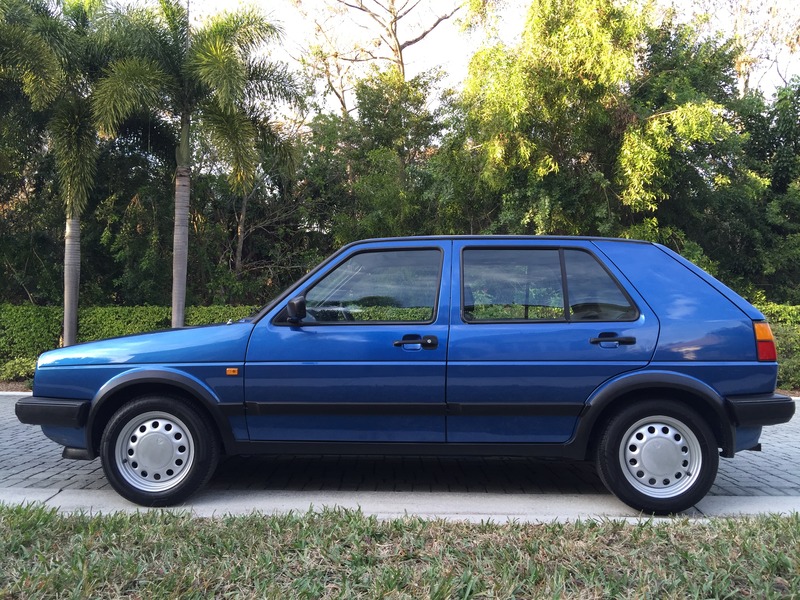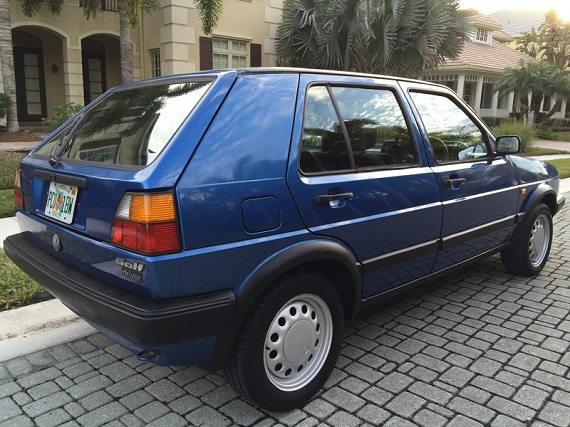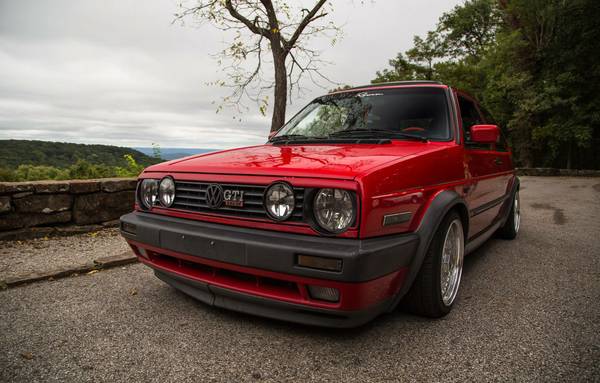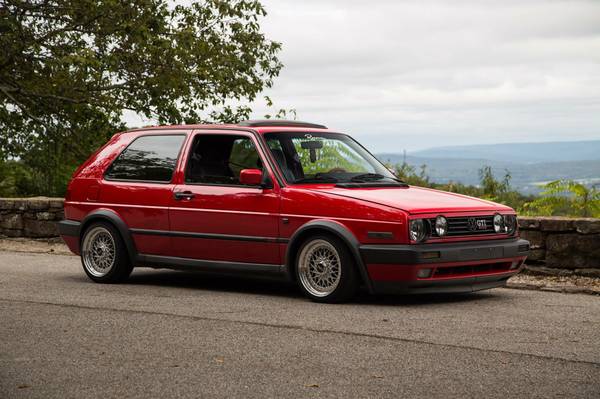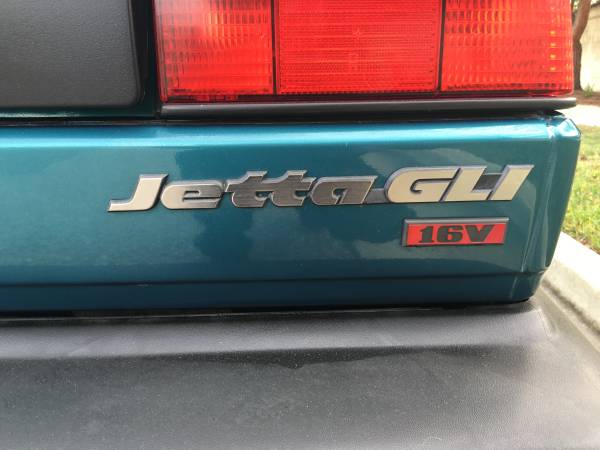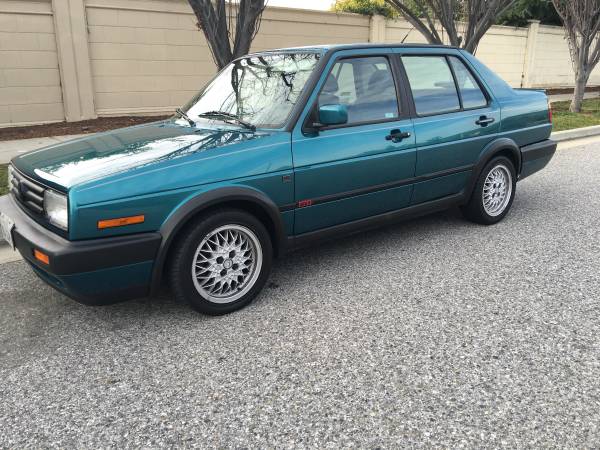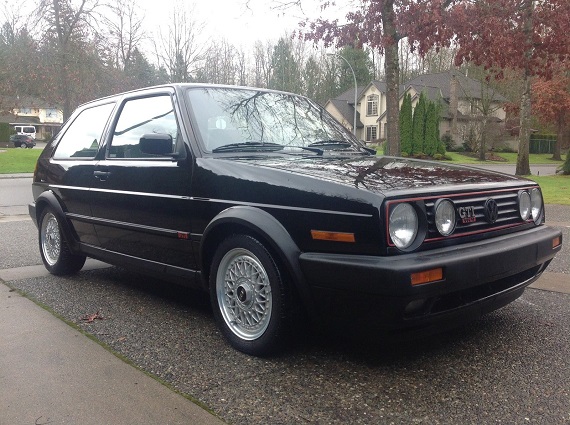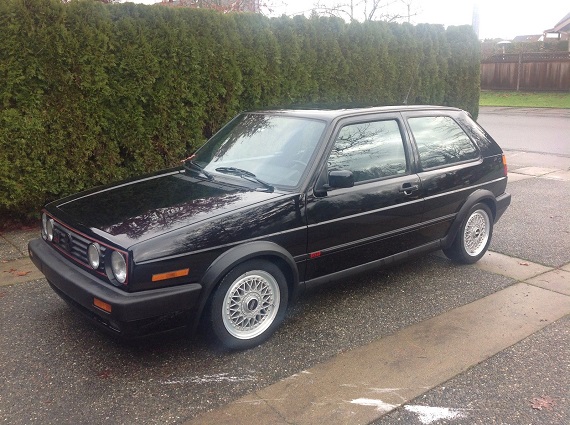It’s interesting to me that Volkswagen has managed to make the Golf a premium product, because for so long it was actually low man on the totem pole at VW. I owned a Westmoreland made Golf built in 1986, and while it was a fun car to drive, luxurious it was not. Compared to new models with Audi-inspired interiors, the Mk.2 cars are positively Spartan in design. However, compare them to some similar Japanese interiors from the day and you begin to see why the Golf was widely regarded as the premium hatch in the segment. It also offered plenty of performance from the 16V models, though in Europe those cars were more expensive to insure. Popularity and a propensity for getting into accidents meant that they were targets for theft, the and consequently high insurance premiums. As a result and due to the higher cost of the GTi models, Volkswagen introduced several GTi-look packages like the Golf GT and this one, the later Golf Driver:
Tag: Mk.2
There’s something that’s just so right about the 1990-1992 GTis. The bigger bumpers gave a chunkier, more menacing look than the 85-89 cars had, and the swap to the 4-headlight grill worked so well. More power and bigger, better BBS wheels made these the best GTis in the eyes of many VW faithful. By 1990, the GTi 16V had gotten fairly expensive so Volkswagen reintroduced a more budget-conscious 1.8 8 valve version. It wasn’t a total poseur, though – Volkswagen made an attempt to differentiate the entry level GTi from the standard Golf. With 105 horsepower on tap (5 more than the standard Golf) and a 5-speed close-ratio gearbox, they channeled a bit of the original A1 GTi even if they didn’t sing up high like the 16Vs did. There were other subtle differences between the 16V and 8V; externally, they looked very similar except that the 16Vs wore appropriate 16V insignia front and rear and on the slimmed down side moldings. The 16Vs also got the larger and wider BBS RM multi-piece wheels with wider flares, while the 8V model wore the 14″ “Teardrop” alloys that had previously been the signature of the 16V. Both now wore roof mounted antenna and integrated, color coded rear spoiler with 3rd brake lights and color coded mirrors, along with the aforementioned 4-headlight grill, deeper rocker panels and integrated foglights. The 16V got beefier Recaro Trophy seats, while the 8V was equipped with the standard sport seats. Both wore the same sport suspension. And, both models now had the passive restraint “running mouse” belts. Today we’ve got one of each to look at, so let’s start with the big brother:
CLICK FOR DETAILS: 1991 Volkswagen GTi 16V on Huntsville Craigslist
1 CommentWhile it’s nice to look at imports from Europe that we didn’t get here, when it comes to the Volkswagen front we got at least one of the most desirable 1990s VWs that wasn’t sold in Europe – perhaps, one of the most desirable all around Volkswagens ever made – in the 1990-1992 GTi 2.0 16V. It wasn’t really the best at much of anything compared to the competition; the engine was thirsty and noisy, the upright shape of the Mk.2 Golf was old and on the verge of being replaced, the expensive wheels bent at the mere sight of a pothole, the transmission self-machined occasionally and the electronics were the work of a high school tech class. If you wanted a fast, economical, awesome handling hatch that actually worked all of the time, you bought an Acura Integra GS-R. But all of these faults didn’t detract from what was for the the most desirable GTi package Volkswagen produced. You got the iconic chunky shape of the Golf with extra wide flares. It sat lower, and though they were soft those BBS RMs were gorgeous. Inside were the spectacular Recaro Trophy seats and little else – these were no-frills cars compared to the more luxurious GLi models. And to top it off, under the hood was the screaming 16V in 2.0 form. Good for 134 horsepower and vibrating the entire car (and your eardrums) at highway speed, this car moved beyond look and into entire sensation:
CLICK FOR DETAILS: 1990 Volkswagen GTi 16V on eBay
1 CommentLast night, I watched a “Throwback” Motorweek which reviewed the then-new top-tier twin-turbocharged Japanese sport coupes. It pitted the height of the market cars against each other – the Mitsubishi 3000GT VR-4, the Toyota Supra Turbo, the Mazda RX-7 and the Nissan 300ZX Twin Turbo in a head to head. It’s hard to believe only a year or two after that segment aired, all of those cars would have disappeared from the U.S. market. While vestiges of them have returned, we’re still generally left without that glut of fast Japanese GT cruisers that were available in the early 1990s. It reminded me of another segment that all but disappeared around the same time; the sports economy coupe. True, cars like the Scion TC live on, but remember when there were 11 or 12 different small coupes you could buy? Like the “HYBRID!”s of their day, each offered shouty colored badges about what made them special; a DOCH here, a 16 valve there, or if you were really, really cool, you had a TURBO badge somewhere on your car. Preferably, multiple places. I remember fondly my friend in high school’s Plymouth Sundance Turbo; it might as well have been a Ferrari to us. While Volkswagen never went that far, they did continue to offer their version of a sport coupe, the Scirocco, through the late 80s. Still sporting its Giugiaro-inspired but Karmann-stolen all-angles design proudly, the Scirocco had a bit of a mystique as all Volkswagen coupes had that it was the best of the class, even if by the numbers it wasn’t:
